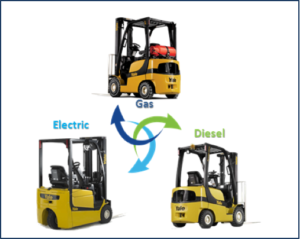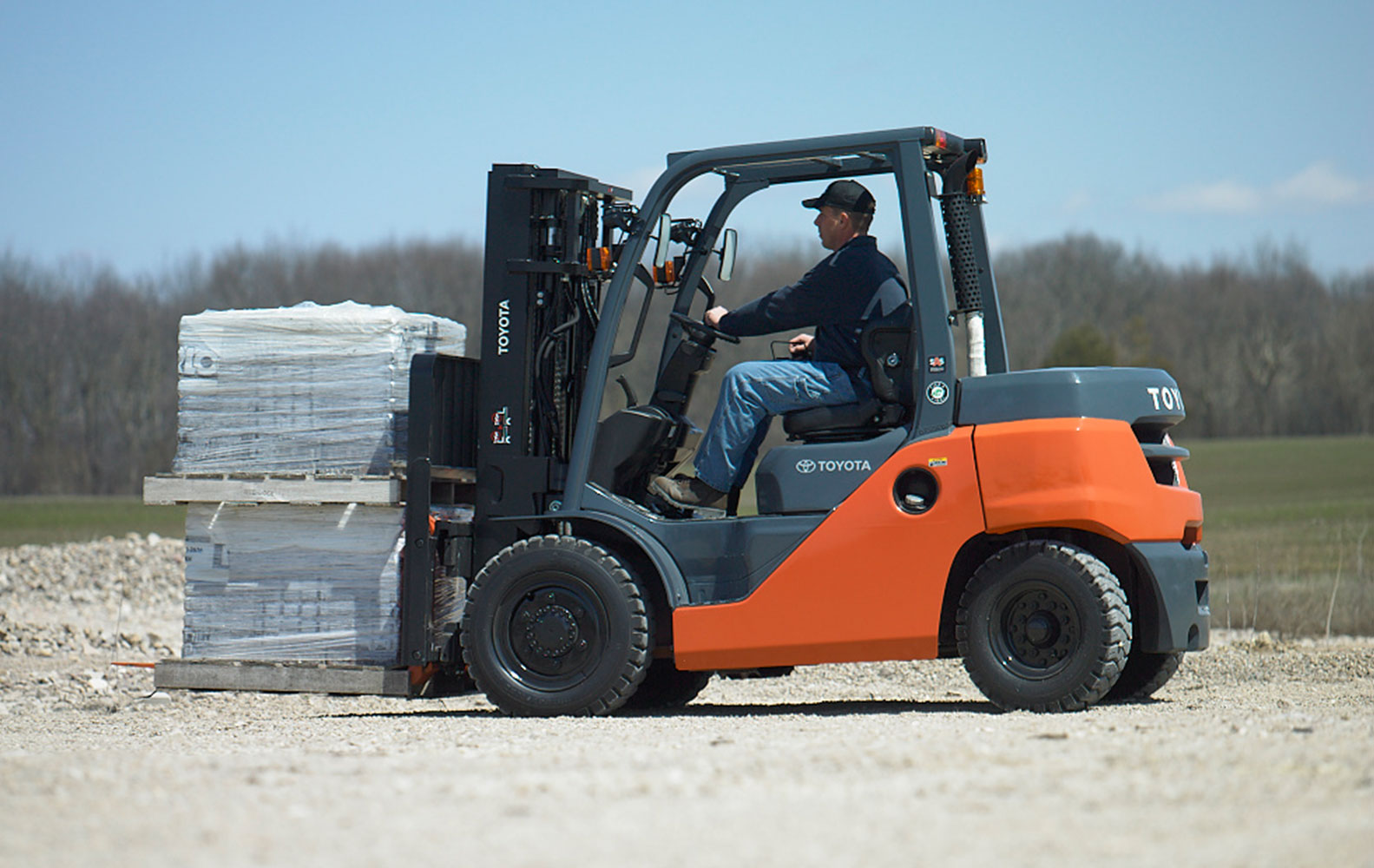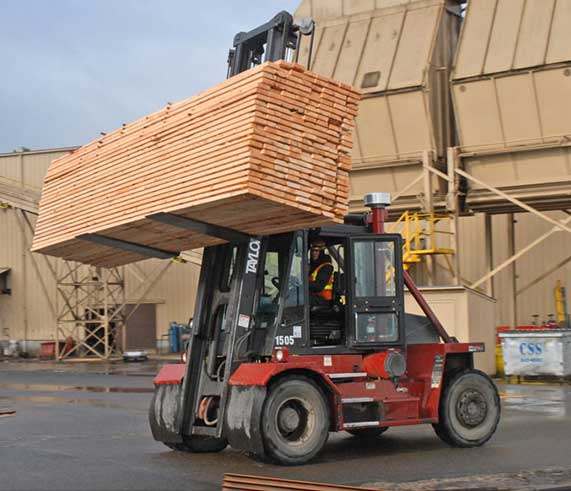In today’s warehouses and distribution centers, forklifting is a viable option. Forklifts can be used to transfer materials or products quickly to locations where physical labor is insufficient.
Some people overlook the fact that, despite its ruggedness and dependability, a forklift requires routine maintenance to keep its performance at its peak. Ignoring routine forklift maintenance schedules can harm the efficiency of a business, and can even jeopardize worker safety and lost productivity.
This article aims to explain how a forklift maintenance plan should be followed when you need your lift working at peak performance.
We will provide an overview of the different types of forklifts and how often you should schedule more frequent maintenance for each type of forklift. Let’s get started.

Factors for forklift maintenance schedule: Preventative maintenance
Every forklift manufacturer has an answer to this question, as do OSHA regulations, but the thing to remember is that there are no hard-and-fast rules here for regular forklift maintenance.
Forklifts take a lot of abuse, so your specific maintenance checklist depends on:
- The type of forklift you have
- How much work it does
- Where you do your work
- Your warranty requirements
Type of forklift and Lift truck: first factor in the forklift maintenance schedule
Electric Forklifts Service Frequency
 Electric forklifts need more frequent service than internal combustion models. They have a lot more moving parts, including electric motors and hydraulic systems, that can leak or overheat if they’re not serviced regularly. In general, For safe operating conditions, electric forklifts need maintenance every 100 hours or once a month, whichever comes first.
Electric forklifts need more frequent service than internal combustion models. They have a lot more moving parts, including electric motors and hydraulic systems, that can leak or overheat if they’re not serviced regularly. In general, For safe operating conditions, electric forklifts need maintenance every 100 hours or once a month, whichever comes first.
Internal Combustion Forklifts Service Frequency
Diesel and propane internal combustion models are simpler than electric models and require less frequent service in most cases. At CIF transmissions, we recommend that our customers schedule maintenance every 250 hours of usage or once every three months, whichever comes first.
Usage Frequency
Most forklift service is performed based on usage in terms of hours. The more a machine is used, the more often it needs preventative maintenance. This can vary from daily to monthly, depending on the forklift model and its work environment.
For example, an electric forklift is used in a warehouse may only need to be serviced once a month, while an internal combustion engine forklift being used in construction might require daily servicing.

Purpose Of The Forklift
A particular forklift maintenance plan may require more regular service if:
- It operates at severe temperatures or in a filthy or dusty workplace.
- After peak season: Because the 1,000 and 2,000-hour maintenance takes a bit longer to perform.
- It uses a connection – because connections cause the forklift’s and lift trucks’ hydraulics and cooling system to work harder.
Warranty Requirements
Forklift manufacturers usually recommend that you schedule an annual check as per the manufacturer’s recommendations, operator’s manual, and data plate.
It’s important to know how often you should schedule maintenance for each of these components to ensure you don’t experience any problems with your machinery and don’t have to pay for costly repairs.
Preventative maintenance services involve checking the forklift for common safety issues or wear-and-tear items, and other factors such as:
- Oil leaks and fluid levels
- Overhead guard
- Fluid leaks
- Tire pressure
- Chain tension
- Pedal hours
- Seat belt integrity
- Horn and lighting function
- Accelerator and brake function
- Battery connections, sulfur levels, water level
Forklift Maintenance checklist and how to save money on maintenance:
The frequency of planned maintenance practices will vary depending on the style and size of your forklift, but following this schedule will help ensure your forklift stays is operating in good shape and saving money from expensive repair.
Every day: routine forklift maintenance services
- Inspect charging equipment and charging area for better safety issues
- Check brakes, parking brake, drivetrain, steering systems, and mast assemblies for performance issues
- Check tire conditions (including air pressure)
- Check oil levels
- Check air filter
- Change engine oil (if applicable)
- Test lights, horns
- To regularly maintain, clean out any debris from under the hood or in any other areas where it could cause a problem
Every 250 Hours/Two Months
- Change engine fluids and filters
- Check/adjust engine idle speed and ignition timing
- Lubricate chassis and mast components
- Inspect the hydraulic system, and mast
- Check belts, hoses, the drive train, steering, and electrical system
- Blow out and inspect the safety of the brake
- Inspect tires for damage and wear
- Inspect attachments (if applicable)
Every 500-600 Hours/Four Months
- All items in the 250-hour service above
- Replace the: antifreeze, spark plugs, differential and transmission oil, contact breaker (points), and condenser
- Check/adjust the chassis links, clutch release bearing, hoses, and mast support bushing
- Inspect the hydraulic oil pump and check the hydraulic oil level hydraulic filter
- Clean the radiator
- Inspect the chains for damage and proper tension, check
- the mast operation, inspect carriage rollers, L&T cylinders for proper function
- Asses pedal free play
- Check/adjust hand brake
- Inspect the PCV valve
Every 1,000-Hours/Six Months
- All items in the 250 and 500-hour services above
- Change all fluids and filters including (but not limited to) hydraulic, transmission, and brake fluid
- Lubricate drive hubs
Every 2,000-Hours/Annually
- All items in the 250, 500, and 1,000-hour services above
- Compression check operation
- Clean and check fuel system
- Hydraulic pressure check
- Cooling system check
- Inspect steer axle
- Inspect tires
- Inspect brake drums (replace if necessary)
Takeaway:
Regular maintenance can be executed by the factory-trained forklift operators themselves, but advanced maintenance should be handled by trained professionals like the experts at CIF transmissions.
Forklifts are a big investment for businesses of all sizes, and routine service can help extend the life of your equipment, ensure safe operating conditions, and save money from expensive repairs.
Forklifts are an essential piece of equipment in any warehouse or other industrial setting. The best forklifts can last for years in working order, but they still require care to stay at their optimal performance.
However, you don’t want to over-maintain them, either. You can find the right balance with a look at what manufacturers recommend, how much you use your equipment and forklift maintenance tips.
FAQs
What is the maintenance interval for a forklift?
The maintenance interval for a forklift depends on the medicine’s type, usage, and cognition. On average, forklifts require servicing and full maintenance after every 200-250 hours of operation or six weeks.
What is the normal service of a forklift?
The normal service of a forklift involves a series of maintenance and inspection tasks that ensure its safe and efficient operation. The service generally includes checking the forklift’s tyre conditions, safety features, fluid levels, brakes, steering, lights, battery, and overall condition.
How often should you change the oil in a forklift?
The oil change frequency for a forklift varies depending on the type of engine, fuel, and oil used, as well as the operating conditions and hours. Forklifts with diesel, LPG, and gasoline engines need an oil change every 500 hours. On the other hand, forklifts with electric engines need it every 1000 hours.
What is the maintenance schedule for a forklift?
The maintenance schedule for a forklift is a plan that outlines the different maintenance intervals and tasks for each component of the machine. It helps to keep track of the service history, prevent breakdowns, and optimize performance.
How often does a forklift need to be serviced?
The service frequency for a forklift depends on the machine’s type, usage, and condition. On average, it needs to be serviced every 200-250 hours of operation. However, depending on their wear and tear, some components may need more or less frequent servicing.

